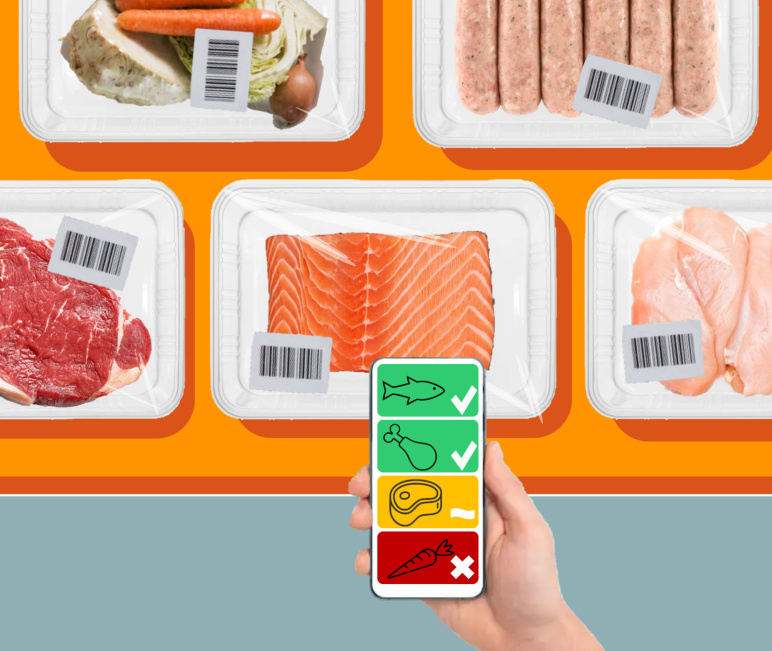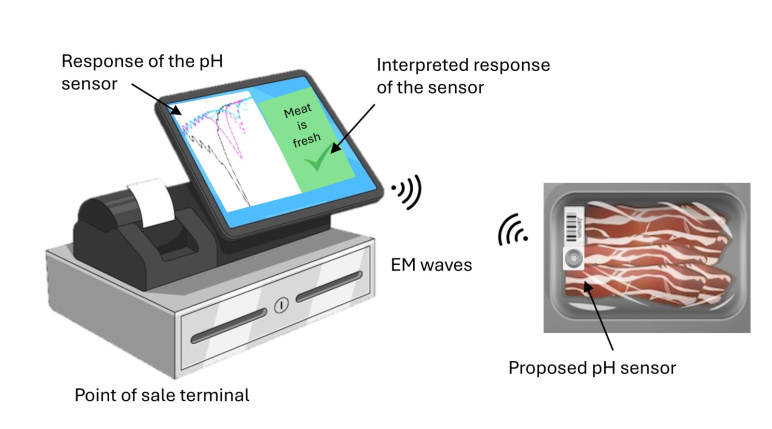Our Research Food-safe, wireless RFID sensor on smart packaging for pH monitoring in the cold chain

Food freshness indicators. Photo credit: Fatima Villa Gonzalez.

Item-level pH sensing at checkout using chipless RFID tags. Photo credit: Fatima Villa Gonzalez.
Principal Investigator
Sanjay Sarma
- Fred Fort Flowers (1941) and Daniel Fort Flowers (1941) Professor of Mechanical Engineering
- Department of Mechanical Engineering
Sanjay Sarma is a professor of mechanical engineering and co-founder of the Auto-ID Center, which developed the EPC standards now used globally in RFID. He has led research centers worldwide, co-founded OATSystems, and serves on multiple boards including Rekor Systems and GS1. Sarma helped shape India’s Aadhaar ID system and has authored over 150 publications. He has received numerous honors, including the NSF CAREER Award and MIT’s MacVicar Fellowship. A pioneer in digital education, he led initiatives like MIT Open Learning and helped launch Singapore University of Technology and Design. His work spans AI, sustainability, and innovation in education.
Photo credit for headshot: MIT
Challenge:
How can we reduce the millions of tons of food wasted annually due to spoilage in the cold chain? Can we leverage existing identification labels on food packaging to monitor the freshness of packaged food?
Research Strategy
- Identify food-safe natural pH-sensitive polymers that exhibit electrical, physical, or other responses to pH changes
- Integrate these polymers with radio frequency identification (RFID) labels on food packaging and ensure that pH changes trigger a measurable change in label wireless response
- Design, fabricate, and test our sensors with real packaged foods to confirm they accurately detect freshness over time without needing to open the package
Project description
Each year, millions of tons of food are wasted due to spoilage in the cold supply chain, from the time food leaves the farm to when it reaches grocery store shelves. Perishable items like meat, dairy, and seafood are especially vulnerable and, by the time spoilage is detected, it is often too late to prevent waste. Freshness indicators provide information about product quality based on chemical changes or microbial growth. However, current methods can be expensive, slow, or require opening the packaging, which can introduce contamination or waste of still-fresh items. The research team plans to create a system that works in real-world settings and helps reduce unnecessary food waste by giving clear, early signs of spoilage.
The researchers aim to develop low-cost, food-safe sensors that can detect changes in food freshness without opening the package and wirelessly communicate that information over short distances. These sensors will work by monitoring pH levels, an indicator of spoilage, as many foods release substances that change the pH as they go bad. Instead of using complex electronics or harmful materials, the sensors will be made from natural, food-safe polymers and designed to be part of radio frequency identification (RFID) labels already used on food packages. This allows the pH-sensitive material to be placed on or close to the food, maximizing the effectiveness of quality assessment.
News
Additional Details
Impact Areas
- Food
Research Themes
- Sensors & Monitoring
Year Funded
- 2025
Grant Type
- Seed Grant
Status
- Ongoing


